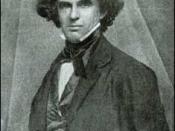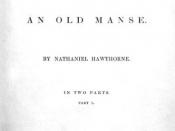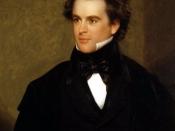Review of Selected Criticism of "Young Goodman Brown"
Kavis Fleming (VCU, 1995)
Baym, Nina. "Thwarted Nature: Hawthorne as Feminist." Nathaniel Hawthorne: A Study of the Short Fiction. Edited by Nancy Bunge. New York: Twayne, 1993.
This chapter looks at "Young Goodman Brown" from the perspective of the female characters. Baym notes that the protagonists, usually male, reject any sexual relationship with a woman, ordinarily the wife or fiancee (136). Usually, the rejection has a fatal effect on the scorned woman. Baym notes that stories written before 1842 have a female character who is destroyed only by accident not by intention. She notes that Brown's departure from Faith was not an intentional act since Brown actually planned on returning to her after the forest trip. But Baym believes that the very act of the man leaving the woman shows the male's indifference to the security of their female counterparts.
Baym sees the women as being sexual beings and men as "sexually frozen" (138). She advises that man's lack of sexual desire is what truly kills the woman and allows the man to continue living in a hollow life. Baym quickly assures her readers that her comments do not reflect "the real nature of women but about the way in which men imagine them" (138). She suggests that Hawthorne's men are obsessed with females but the only way they can make any connection with women is through fantasy.
Coleman, Arthur. "Hawthorne's Pragmatic Fantasies." CLA Journal 31 (1988): 360-71.
This article looks at the role of fantasy in many of Hawthorne's works. There is a very small section devoted to "Young Goodman Brown". In general, Coleman focuses on Hawthorne's use of fantastic, eerie settings. "Young Goodman Brown" works as both reality and fantasy because...


